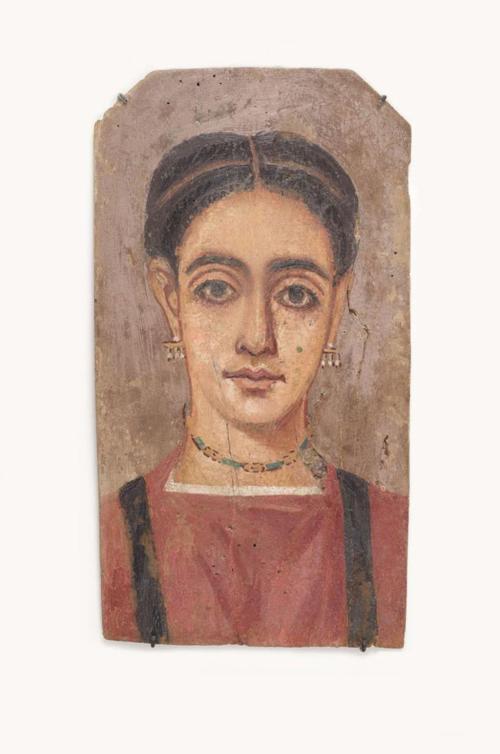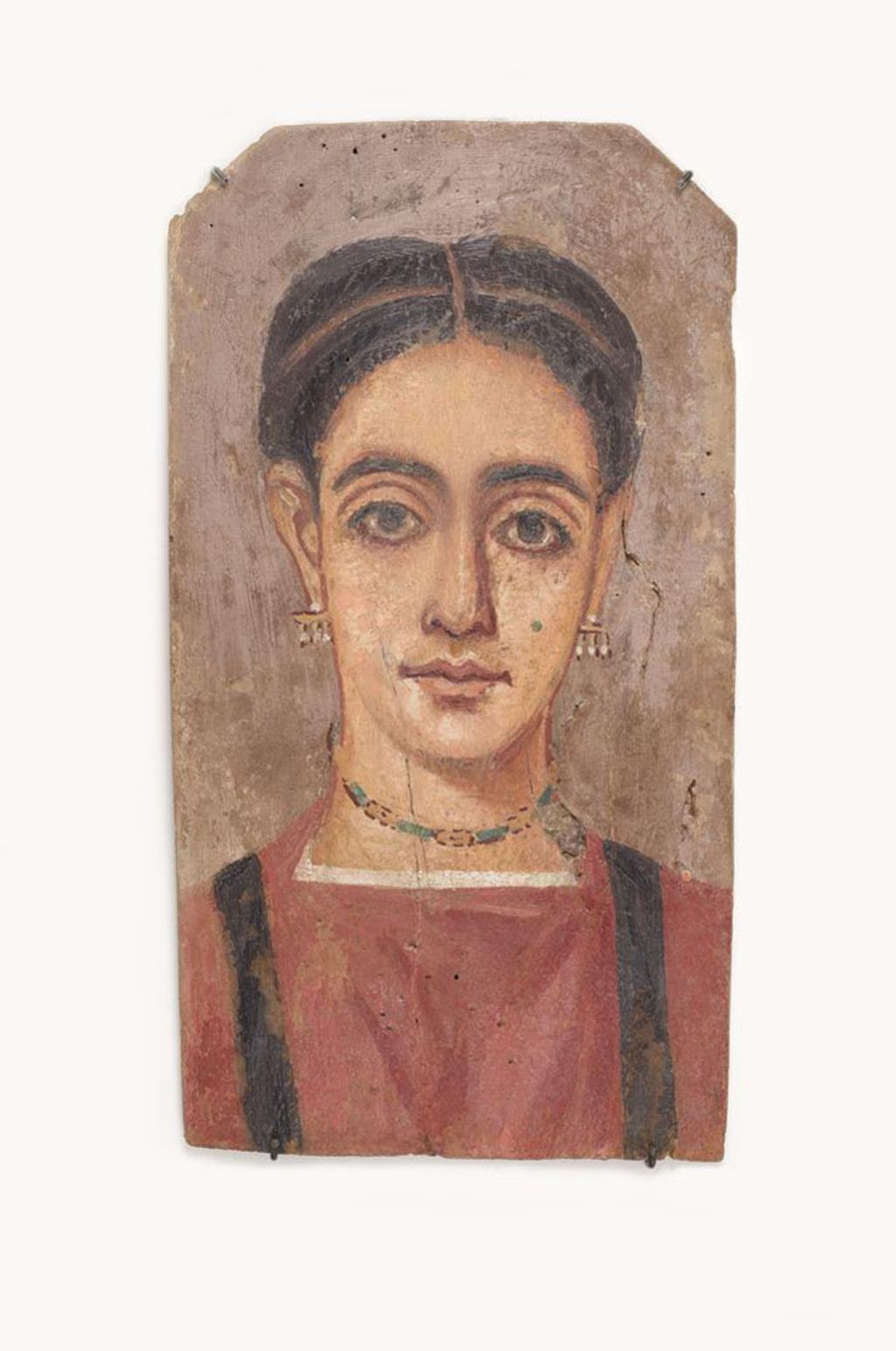
Mummy Portrait of a Woman
In this portrait, a young woman stares at the viewer with large, dark eyes. She wears jewelry popular in the latter half of the second century CE and a red dress (tunica) with vertical black bands (clavi) over the shoulders that indicate her aristocratic social status. Her hair is parted and she wears a simple headband, a style made popular in portraits of Faustina the Younger (empress between 161 and 175 CE). Painted on a wooden panel, this mummy portrait was meant to be inserted into the wrappings of the deceased. Such naturalistic portraits were fashionable among the upper classes in Roman imperial Egypt (particularly from the first to third centuries CE). The angled corners at the top of the panel are typical of those from Ar Rūbīyāt, a site in the Al Fayyum basin in Egypt, which is the presumed find spot of this work.
On the back of the portrait, there are a series of marks, stamps, and stickers, which provide supporting information about its biography and provenance. A round stamp in violet ink that reads “Sammlung Graf,” confirms the portrait originated in the collection of Otto Theodor Graf (1840–1903). Graf was a Viennese dealer and collector who acquired 330 mummy portraits in 1887 from Ar Rūbīyāt. After Graf’s death, his heirs sold his collection over time. Another round stamp with a double border in violet ink has partially preserved text for the Central Office of Monument Protection in Austria and was an export stamp in use between 1934 and 1938. It was during this time that the portrait left Austria, which is corroborated by its appearance in a Swiss auction catalog in 1935. According to the auction house, the portrait was consigned by a Dr. Neudörfer from Vienna (no further information known). Although the portrait did not sell in that auction, a Swiss customs stamp, a square paper stamp with scalloped edges and perforations in use between the 1930s and 1950s, confirms the movement of the painting through Switzerland. Later, it was part of the collection of David Sylvester (1924–2001), a well-known art critic who wrote the catalogue raisonné on René Magritte under the patronage of John and Dominique de Menil. In 1971, they purchased the portrait, and it officially entered the Menil Collection in 1997.
- Nice. Luc Tuymans

